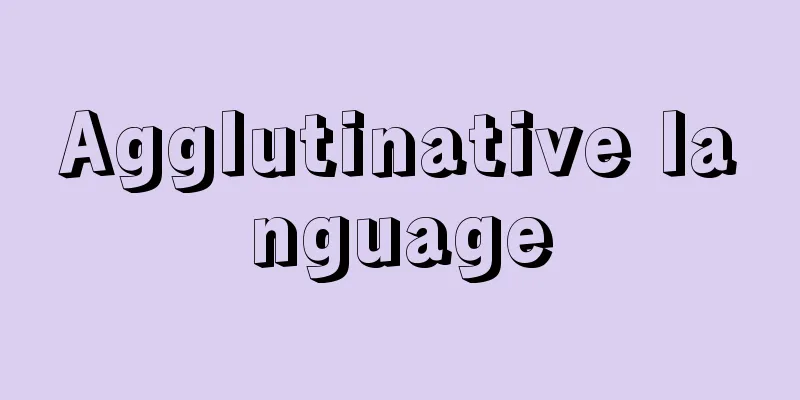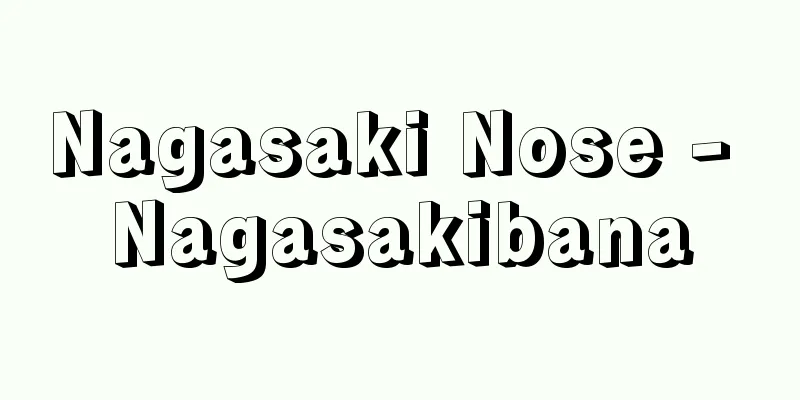Agglutinative language

|
A structural type of language. A type of language in which words with their own unique meanings and functions are linked to each other (more precisely, morphemes) to show the grammatical relationship between words in a sentence. Examples of this type of language include our Japanese, Korean, Mongolian, Turkish, and Hungarian, as well as Altaic and Finno-Ugric languages. These linking words are called auxiliary verbs, particles, or affixes, and their greatest feature differs from the inflected endings found in inflected languages (also called inflected endings or inflected endings) in that each has a unique and single meaning and function. For example, the Russian word жителями/zhitelyami consists of the stem жител/zhitel- (resident) and the ending ями/-yami (by). From this point of view, it does not look very different from the Japanese "jumin de mote," but in fact this ending ями/-yami (1) indicates plural, (2) instrumental ("by..."), and (3) masculine. Therefore, to express this correctly in an agglutinative language like Japanese, two or three words with a single meaning or function must be added, such as "jumin/ tachi / mote (grammatically masculine )." Furthermore, agglutinative also means that no other words can be inserted between these addition words and the stem. [Mantaro Hashimoto] "The Structure of Language" by Hisanosuke Izumi (1967, Kinokuniya Shoten) " "Introduction to Linguistics: Language and Symbolic Systems" by Y.R. Chao, translated by Mantaro Hashimoto (1980, Iwanami Shoten)" "Winfred P. Lehman Syntactic Typology: Studies in the Phenomenology of Language (1978, University of Texas Press, Austin, London)" Source: Shogakukan Encyclopedia Nipponica About Encyclopedia Nipponica Information | Legend |
|
言語の構造類型の一つ。文中における単語間の文法的な関係を示すために、それぞれの単語にそれぞれ特有な意味や機能をもったことば(正確には形態素)を結び付けていくタイプの言語。われわれの日本語や、朝鮮語、モンゴル語、トルコ語、ハンガリー語と連なるアルタイ語やフィン・ウゴル語などがこれにあたる。この、結び付けていくことばは、助動詞とも助詞とも接辞ともいわれるが、それらが屈折語にみられる変化語尾(曲用語尾とも屈折語尾ともいう)と異なる最大の特徴は、そのおのおのが特有にして単一の意味や働きをもっている点である。たとえば、ロシア語のжителями/zhitelyamiは、語幹жител/zhitel-(住民)と語尾ями/-yami(でもって)からなる。これだけみると、日本語の「住民でもって」と外見上はあまり違わないのであるが、実際にはこの語尾ями/-yamiは、(1)複数であり、(2)造格(「……でもって」「……にて」)であり、(3)そのうえ男性であることを示している。したがって、このことを日本語のような膠着語で正確にいおうとしたら、「(文法的には男性の)住民・たち・でもって」のように、二つか三つの、単一の意味や働きをもったことばを添えなければならないわけである。なお、膠着というのは、これらの添えことばと語幹との間に、他のことばを挟みえないことも意味している。 [橋本萬太郎] 『泉井久之助著『言語の構造』(1967・紀伊國屋書店)』▽『Y・R・チャオ著、橋本萬太郎訳『言語学入門――言語と記号システム』(1980・岩波書店)』▽『Winfred P. LehmanSyntactic Typology――Studies in the Phenomenology of Language (1978, University of Texas Press, Austin, London)』 出典 小学館 日本大百科全書(ニッポニカ)日本大百科全書(ニッポニカ)について 情報 | 凡例 |
Recommend
"Christian Agricultural Poem"
…In “Mourning for the Primroses” (1901) and “A Gl...
Argunov, AA - Argunov
...At the end of the 1890s, people who wanted to ...
Evren, K.
...After 1978, Turkey was economically bankrupt. ...
Canal Construction
… [Changes in the theory of the Industrial Revolu...
Viña del Mar
A tourist and resort city in central Chile adjacen...
Family temple - Kabyo
…In China, a building for worshiping the mortuary...
Sahaaba (English spelling)
The companions of the Prophet Muhammad. In the nar...
Takitaro Minakami - Takitaro Minakami
Novelist, critic, and playwright. Born in Tokyo o...
Alexander von Humboldt
Born: September 14, 1769 in Berlin Died May 6, 185...
Deer mouse
A general term for a mammal of the order Rodentia,...
Lartinge, C.
…A monorail is a railway that runs on a single ru...
Olympus - Orimbosu
…2917m above sea level. In modern Greek, it is ca...
screw dislocation
…Therefore, the dislocation line is not broken in...
Jean Leray
1906‐1998 French mathematician. Born in Nantes, he...
zoea
…All species of the Pamphinidae family and some s...









